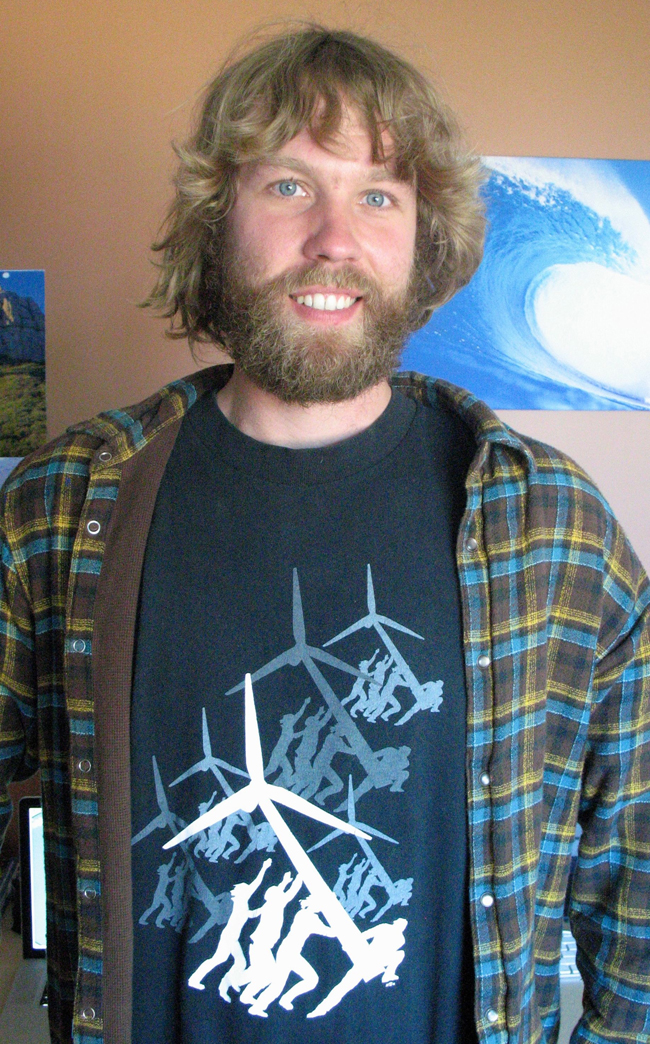
International Team Crafts Plan for Feeding the World While Protecting the Planet
Can we feed the 9 billion-plus people anticipated to live on this planet in 2050 without destroying Earth's life support systems? A team of researchers from the U.S., Canada, Sweden, and Germany concluded that it can be done –– by creating a recipe for globally sustainable agriculture.
UC Santa Barbara researcher Christian Balzer, a graduate student in UCSB's Department of Ecology, Evolution, and Marine Biology, contributed to the report, which is published in the October 12 online issue of the journal Nature.
"Global food security and environmental sustainability are not at odds –– they can and must go hand-in-hand," said Balzer.
Combining new data gathered from satellite imagery and crop records around the world with new computer models of global agricultural systems and their environmental impacts, the team developed a plan for doubling the world's food production while reducing environmental impacts of agriculture.
"For the first time, we have shown that it is possible to both feed a hungry world and protect a threatened planet," said lead author Jonathan Foley, head of the University of Minnesota's Institute on the Environment. "It will take serious work. But we can do it."
The team's recommendation is to successfully pursue sustainable food production on five key fronts: halting farmland expansion in the tropics; closing yield gaps on underperforming lands; using agricultural inputs more strategically; shifting diets; and reducing food waste.
The research was a response to what Foley calls "a daunting triple threat."
"First, a billion people currently lack adequate access to food, not only creating hunger, but also setting the stage for worldwide instability," Foley said. "Second, agriculture, the single-most important thing we do to benefit humanity, is also the single biggest threat to the global environment –– including the land, water, and climate that make Earth habitable. Third, with 2 to 3 billion more people expected in coming decades, and increasing consumption of meat and biofuels, food demand will be far greater in 2050 than it is today. Given that we're not even able to meet current needs sustainably, how will we feed the anticipated 9-billion-plus of us without destroying the planet?"
The environmental toll of agriculture has been heavy, according to the researchers. Humans have already cleared 70 percent of all grasslands, half of all savannas, 45 percent of temperate deciduous forests, and 27 percent of tropical forests. In addition, intensification of agriculture –– changes in irrigation, fertilizer use, and other practices aimed at boosting per-acre yield
–– has increased water pollution, local water shortages, and energy use. Strikingly, agricultural activities such as clearing land, growing rice, raising cattle, and overusing fertilizers make up the single largest contributor of greenhouse gases to the atmosphere, accounting for roughly 35 percent of the total.
Based on data they gathered about crop production and environmental impacts using satellite maps and on-the-ground records, the researchers proposed a five-point plan for feeding the world while protecting the planet:
Halt farmland expansion. Reduced land clearing for agriculture, particularly in the tropical rainforests, can yield huge environmental benefits without dramatically cutting into agricultural production or economic well-being.
Close yield gaps. Many parts of Africa, Latin America, and Eastern Europe have substantial "yield gaps" –– places where farmland is not living up to its potential for producing crops. Closing these gaps through improved use of existing crop varieties, better management, and improved genetics could increase current food production nearly 60 percent.
Use inputs more strategically. Current use of water, nutrients, and agricultural chemicals suffers from what the research team calls the "Goldilocks Problem": too much in some places, too little in others, rarely just right. Strategic reallocation could substantially boost the benefit from precious inputs.
Shift diets. Growing animal feed or biofuels on top croplands, no matter how efficiently, is a drain on human food supply. Dedicating croplands to direct human food production could boost calories produced per person by nearly 50 percent. Even shifting nonfood uses such as animal feed or biofuel production away from prime cropland could make a big difference.
Reduce waste. One-third of the food farms produce ends up discarded, spoiled, or eaten by pests. Eliminating waste in the path food takes from farm to mouth could boost food available for consumption another 50 percent.
In addition to the University of Minnesota and UCSB, the team included scientists from University of Wisconsin, McGill University, Arizona State University, Stockholm Resilience Centre at Stockholm University, Stockholm Environment Institute and the University of Bonn.
Related Links



